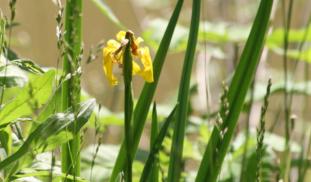Please wait...
About This Project
"Biodiversity" describes how many and what kind of organisms live in a place. It is an important measure of how well a habitat is doing and helpful in deciding conservation practices. It also provides useful descriptive information about a place in general. Furthermore, information on biodiversity can be used to look at how similar are various areas, and which areas- when protected- would benefit the most organisms.
More Lab Notes From This Project

Browse Other Projects on Experiment
Related Projects
Zap-pore: DIY Electroporation for Global Biotech Accessibility and for plant genetic engineering
Zap-pore is a low-cost (10$), open-source DIY tool for electroporation, using everyday tools and common...
Exploring African biodiversity with an open-source educational program in Plant Synthetic Biology
Much of Africa's plants have not been studied. As a non-profit, SynBio4ALL aims to study plant biodiversity...
Empowering high school students in genome sequencing and bioinformatics
This project transforms HS science education by integrating real-time DNA barcoding and bioinformatics into...



